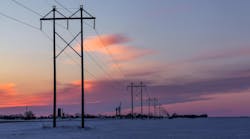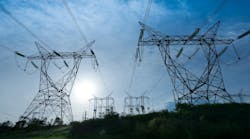The Federal Energy Regulatory Commission today proposed regulations to coordinate all federal authorizations and related environmental reviews of proposed transmission facilities in designated national interest electric transmission corridors. The regulations would apply to entities filing applications for transmission line facilities.
“Today, we act to strengthen our energy infrastructure by issuing proposed rules to implement the transmission siting provisions of the Energy Policy Act of 2005. These rules will govern the issuance of construction permits by the Commission for projects that meet the statutory criteria,” Chairman Joseph T. Kelliher said. “However, it is important to note that our regulations are intended to supplement the traditional state siting process. I would expect that most transmission projects would continue to be sited by states under state law. Our jurisdiction to issue a construction permit applies only under limited circumstances, and our proposed rules respect those limits.”
The Energy Policy Act provides for federal backstop siting authority of certain electric transmission facilities in order to increase transmission capacity and maintain system reliability. Upon the Secretary of Energy’s designation of national interest electric transmission corridors experiencing electric transmission capacity constraints or congestion that adversely affects consumers, the Commission may issue permits to construct or modify electric transmission facilities if the Commission finds:
- The applicant for the facility does not qualify to apply for siting approval in the state because the applicant does not serve end-use customers in the state;
- The state with siting authority takes longer than one year after the application is filed to act; or
- The state imposes conditions on a proposal such that it will not significantly reduce transmission congestion or it is not economically feasible.
“The Department of Energy deserves praise for how it has proceeded with respect to its transmission congestion study, and I am confident the Department will designate transmission corridors in a timely manner, consistent with the statute,” Chairman Kelliher said. “Our two agencies are working together closely and productively. In particular, I commend the Department for its recent order that delegated to the Commission lead agency status once a permit application is filed.”
The Secretary of the Department of Energy, effective May 16, 2006, determined that the Commission’s expertise in siting energy facilities would prove beneficial to this process and, as a result, delegated to the Commission certain aspects of the coordination of federal authorizations and related environmental review.
A proposal to build or expand electric transmission facilities brought before the Commission must be used for interstate commerce, be consistent with the public interest, significantly reduce transmission congestion in interstate commerce, be consistent with national energy policy, and maximize as much as possible existing towers and structures.
In today’s proposed rule, the Commission seeks to facilitate maximum participation from all interested stakeholders through a Public Participation Plan and an extensive pre-application and post-application process. The proposed participation plan would provide all interested parties, including affected landowners, with information on all aspects of the proposed project, including national and local benefits and environmental impacts. The participation plan ensures ample opportunity for public involvement during the pre-filing and application processes. The participation plan would be accessible in a central location in each county through which the proposed project would be located.
The proposed pre-filing process includes a consultation with the Director of the Office of Energy Projects (OEP), the start of environmental review under the National Environmental Policy Act, numerous public participation opportunities, and a determination by the Director of OEP that an application is ready to be filed for Commission consideration.
Once an application is filed, the proposed rule calls for notifying the public of the application, issuing and soliciting comments on the draft environmental document, preparing and issuing a final environmental document, reviewing the record and issuing a final decision by the Commission.

